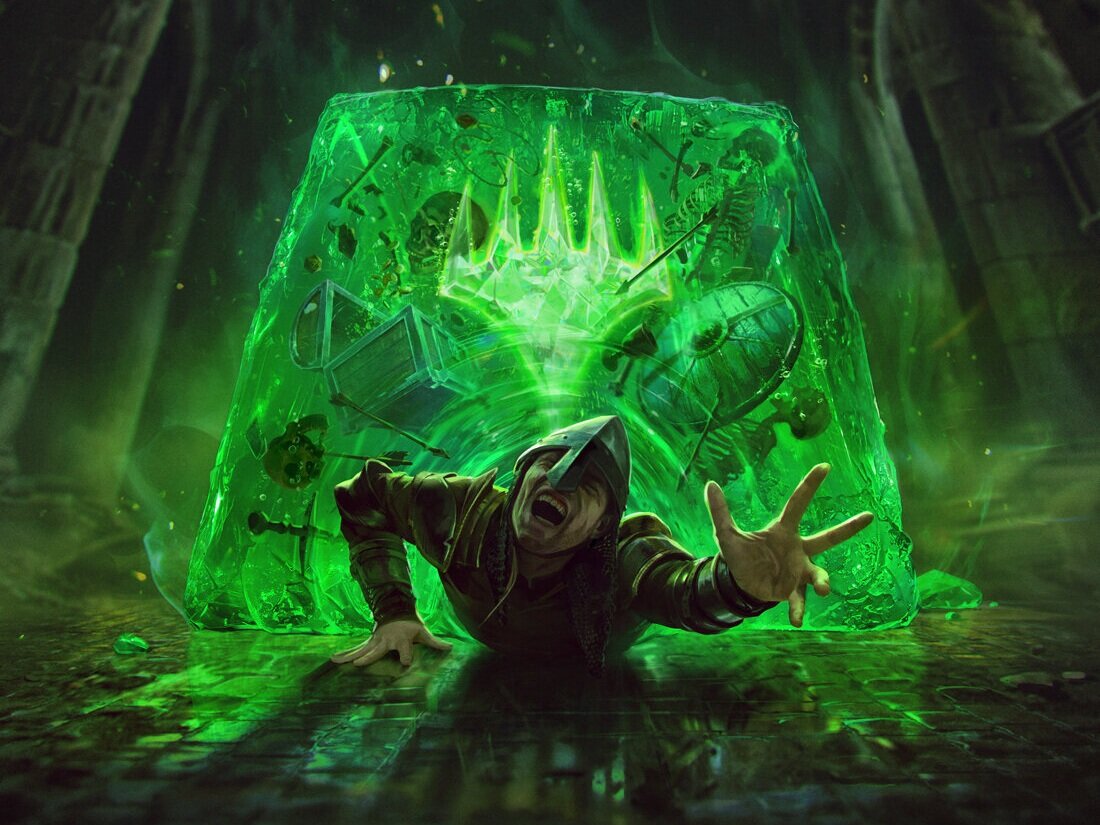Monsterology: The Beholder

The beholder. A classic Dungeons and Dragons creature. While most players are aware of it being a floating orb covered in eye stalks, few are aware of a beholders behavior, which is so inherently quirky that it can take on many roles within your adventure. So with that being said, let’s learn about the beholder in today’s Monsterology.
So to begin, lets talk about… what we are NOT going to talk about. This article is in no way going to discuss combat with a beholder. Your welcome to look up its stats and abilities, they are pretty straight forward (and deadly). Instead we are going to look at the behavior of a beholder.
First, it is good to understand that while their are many kinds of beholders and beholder-kin, we are going to be focusing on two specific types, solitary and eye tyrants. Let’s take a look at the key difference between the two.
Solitary
Solitary beholders are terribly named, as they are not, in fact, solitary. They do not live alone. Rather the solitary portion is meant to represent that they want to live away from civilization. This usually causes them to live in caves or hidden away places. Using their disintegration ray, they can carve out their own underground spaces, so if they can’t find a cave, they can always make one. Once they have a lair, they will gather minions. Usually this will be lesser beings, but we’re not talking rats and snakes here. We’re talking about bugbears, hobgoblins, lizardfolk, and human bandits. These are creatures that will need places to sleep and eat, and often come in groups measured by the dozen. So really, solitary beholders run a small underground town, where they are the despot in charge.
Eye Tyrants
Eye Tyrants are not isolationists. They do not want to hide from civilization, they want to dominate it. These beholders can be found in society, leading groups or organizations. It is important to note, though, that beyond their willingness to tolerate being around others, all the other aspects of their psychology remain the same, just to a slightly lesser degree.
So, given that both types of beholder tend to behave the same, what are those behaviors? Generally, a beholder is ruled by the following traits:
Ego
The beholder always feels that he is the best beholder that has ever lived, superior to all other creatures, including other beholders. Playing upon this ego can often cause a beholder to tolerate the presence of lesser beings, even if they are of the solitary type, though their other traits can often complicate this strategy. This is not, however a strategy for other beholders to follow. Because of their extreme ego, the beholder look upon all other beholders as imperfect, so flawed that they must be destroyed. For this reason, a beholder will attack any other beholder it considers different from itself.
Genius Level Intellect
Although beholders only have a 17 Intelligence, they all are considered to have genius level intellect, as the vast majority of their day is spent constantly thinking. While their ego might allow you to manipulate them to some degree, they are not dumb. They are actually insanely, furiously, smart. Try to think of them less as a ball of eyes that’s going to try to bite you, and more like an arrogant college professor plotting your murder while carrying an arsenal of weapons.
Paranoia
Beholders believe that everyone and everything is out to get them, including other beholders. For solitary beholders this causes them to hide from society and only surround themselves with creatures that are so beneath them, they can’t possibly pose a threat. For eye tyrants, this means that even when working along side other creatures, they always believe they could be double-crossed or assassinated at any moment. No beholder should ever be paranoia free, rather, the two types presented here simply have this trait in differing amounts.
Strategic Thinking
Because they beholders are incredibly smart, terribly paranoid, and spend all day thinking, they are incredibly strategic. They have considered EVERY possible way they could be harmed or killed, and have a contingency for every possible scenario. Never let your players outsmart a beholder when it comes to planning how to take one down. If they are going to collapse their cave, the beholder has thought of that, and prepared a contingency. Are they going to poison its food? Th beholder has thought of that, and prepared a contingency. Are they going to descend into the shadowfell, vanquish the Raven Queen, steal her most powerful hexblade and stab the beholder in the eye? The beholder has already thought of this, purchased a hexblade-proof eyepatch, and has it in a bag of holding at it’s feet (if it had feet, that is).
So now that we know what drives a beholder’s behavior, do we know everything we need to place one in an adventure? Not quite. Because their still remains one important ability that has not been discussed. A beholder’s dreams.
Dreams
A beholder’s reality is often what it believes it to be. If it thinks you are a traitor, you are, and thus must be disposed of. If it thinks you are merely food, it will consume you. But when a beholder sleeps (which it does with its eyes open and alert, so paranoid that it can never truly be unconscious), it dreams. And because it often believes those dreams are real, they become real. This means the beholder can effectively wish things into existence. Often these effects are minor, but can have a range of up to a mile and can last for up to 24 hours. So has a beholder moved into the cave below a town and is dreaming of it’s own murder? Perhaps the fountain in the town square is filled with blood instead of water for the next day. Did the beholder’s servants bring it a feast of woodland creatures right before it took a nap? Perhaps the town is now suddenly infested by a sea of squirrels that smell like roast chicken. While these effects are not usually hostile, nor permanent, they can be quite startling, and often seemingly without cause. And to make matters worse, on some occasions, a beholder can dream so intently of other beholders, that one immediately springs into being. This process is actually the beholder’s sole method of procreation, though it is often immediately followed by one of the beholders murdering the other. In other circumstances these newly created beholders can be lesser beholder-kin that become the original beholders minions, or even mirror image copies of the original that can act as more of a hive based intelligence.
Now that we know all about the beholder, how can we use one in our adventure?
1st - What Not To Do
Do not have your players turn the corner in a dungeon and bump into a beholder that’s just wandering about. This is not how beholders work. They should never be encountered by accident, as beholders out plan any form of accident. They should also not be hanging out on their own, as beholders have minions regardless of their type.
2nd - Understand Their Role
Beholders are a boss. Not just in terms of their combat abilities, but because of how they operate. They can be encountered at the very end of an adventure as the source of all the player’s troubles, or encountered immediately, and then set up as a villain the party will interact with over the course of the adventure. They are never a foot solder. They are a catalyst, a cause of trouble, a taskmaster, an overlord. And by no means must you fight them. Villains can be defeated by more than lightning bolts and longswords. This makes beholders a great foil for parties of any level, especially when your players know that they are so weak that they will have no choice but find a solution that doesn’t involve direct combat.
3rd - Set The Proper Tone
Beholders are not normal. They have the creature type of aberration for a reason. They are strange and alien in their intelligence. That said, given their traits, they are also ruthless, brilliant, despotic, paranoid creatures, all of which are very human traits. Make them understandable to the player, clear in their motivations and intent. But also make them strange and intense. More importantly, if they are central to the story you are telling with your adventure, make sure that story is everything the beholder is. If your working with an eye tyrant, look to real world despots for your inspiration. Stalin and his murderous paranoia comes to mind. If your dealing with more of a dreaming beholder than a fully conscious one, look to surrealist works or horror films. Imagine the Matrix, where the constructed world is entirely a beholder dream, or an adventure setting like the Overlook hotel, where all the ghosts and waves of blood are products of a beholder nightmare. In fact, what if a beholder beneath a small town read a different Stephen King story (Stephen King, the dwarven bard, who also writes about killer clowns and possessed red wagons) every night before bed? I suppose we should save that idea for a future article…
But until then,
Happy roleplaying, and may the dice be ever in your favor.




